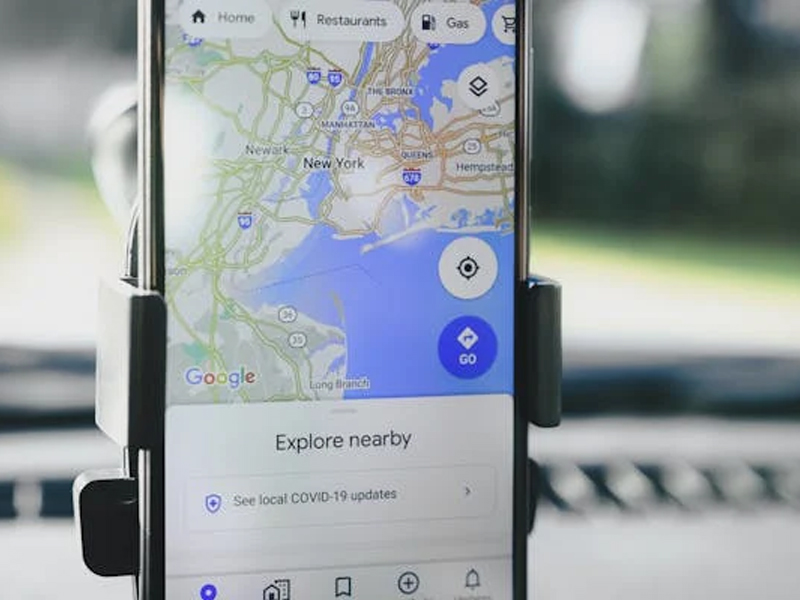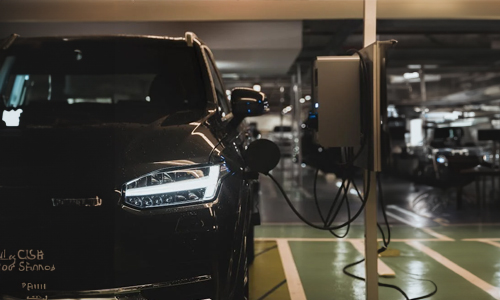No More Range Anxiety: Google Maps Uses AI to Simplify EV Charging

AI & ML
Google Maps to the Rescue: How AI Makes EV Charging a Breeze
Smarter Search and Recommendations
 Gone are the days of frantically searching for charging stations. By understanding your car’s specific charging needs and factoring in your route, Google Maps can recommend the most suitable charging stations along your journey. This eliminates the guesswork and ensures you reach your destination with enough power.
Gone are the days of frantically searching for charging stations. By understanding your car’s specific charging needs and factoring in your route, Google Maps can recommend the most suitable charging stations along your journey. This eliminates the guesswork and ensures you reach your destination with enough power.
Real-time Availability and Wait Times
No more arriving at a station only to find all ports occupied. Google Maps integrates with charging networks to display real-time information on station availability and potential wait times. This allows you to plan your stops efficiently and avoid unnecessary delays.Detailed Station Information
AI helps Google Maps provide in-depth details about charging stations. You’ll see information like the type of chargers available (e.g., Level 2, DC Fast Charging), charging speeds, payment options, and even user reviews highlighting amenities or potential issues. This comprehensive information empowers you to make informed decisions about your charging stops.In-Car Integration and Navigation
Imagine seamlessly integrating your charging needs with your in-car navigation system. Google Maps is working towards integrating with compatible vehicles to display nearby charging stations directly on your car’s dashboard. This eliminates the need to constantly switch between apps and keeps you focused on the road.The Benefits of AI-powered EV Charging
The integration of AI in Google Maps offers numerous benefits for EV drivers:Reduced Range Anxiety
Knowing exactly where to find compatible chargers and having access to real-time information significantly reduces the fear of running out of power. This allows EV owners to confidently plan longer journeys and explore new destinations.Improved Trip Efficiency
By recommending optimal charging stops and factoring in wait times, Google Maps can help you optimize your travel time. This translates to a smoother and more efficient driving experience.Informed Decision Making
 Having access to detailed information about charging stations empowers you to make informed choices. You can choose stations based on factors like charging speed, availability, amenities, and even user reviews.
Having access to detailed information about charging stations empowers you to make informed choices. You can choose stations based on factors like charging speed, availability, amenities, and even user reviews.
Promoting Sustainable Transportation
By making EV ownership more convenient and less stressful, Google Maps’ AI features can contribute to a wider adoption of electric vehicles. This, in turn, can lead to a significant reduction in carbon emissions and a cleaner environment.A Glimpse into the Future: What’s Next for EV Charging with AI?
 The future of EV charging with AI looks promising. Here are some potential advancements on the horizon:
The future of EV charging with AI looks promising. Here are some potential advancements on the horizon:
Personalized Charging Recommendations
Imagine AI algorithms that not only recommend charging stops but also personalize them based on your driving habits and preferences. This could include factoring in factors like preferred charging networks, rest stop choices, or even coffee breaks!Predictive Charging Insights
AI could analyze historical traffic patterns and charging station usage to predict potential wait times and congestion. This would offer even greater levels of planning and efficiency for EV drivers.Integration with Smart Grids
AI could play a role in integrating EVs with smart grids, allowing for optimized charging times based on electricity availability and cost. This would further enhance the sustainability and efficiency of EV charging.A Brighter Future for EV Travel
Google Maps’ AI-powered upgrades represent a significant step forward for EV ownership. By alleviating range anxiety and simplifying the charging experience, Google Maps is paving the way for a more convenient and stress-free future of electric vehicle travel. As AI technology continues to evolve, we can expect even more innovative features that make EVs a truly viable and appealing option for a wider range of drivers. So, buckle up, charge up, and get ready to experience the future of eco-friendly road trips with the help of Google Maps and the power of Artificial Intelligence.You Might Be Interested In:
Frequently Asked Questions?

01
Internet of Things
Tesla’s Robotaxi: A Driverless Future on the Autobahn (or Freeway)?
May 2, 2024

01
AI & ML
Meta Llama 3: Jack of All Trades, Master of None (But Still Free!)
May 1, 2024

01
Tech Gadgets
Don’t Trash Your Tech! Combating E-waste & Embracing Responsible Gadget Disposal
Apr 30, 2024

01
Cybersecurity
Beyond Likes and Followers: Exploring the Evolving Landscape of Social Media
Apr 28, 2024
SUSBSCRIBE TO OUR NEWSLETTER
Join our subscribers list to get the latest news and special offers.
Tesla’s Robotaxi: A Driverless Future on the Autobahn (or Freeway)?
Meta Llama 3: Jack of All Trades, Master of None (But Still Free!)
Don’t Trash Your Tech! Combating E-waste & Embracing Responsible Gadget Disposal
Mixed Signals: Decoding Intel’s Stock Slump Despite Earnings Beat